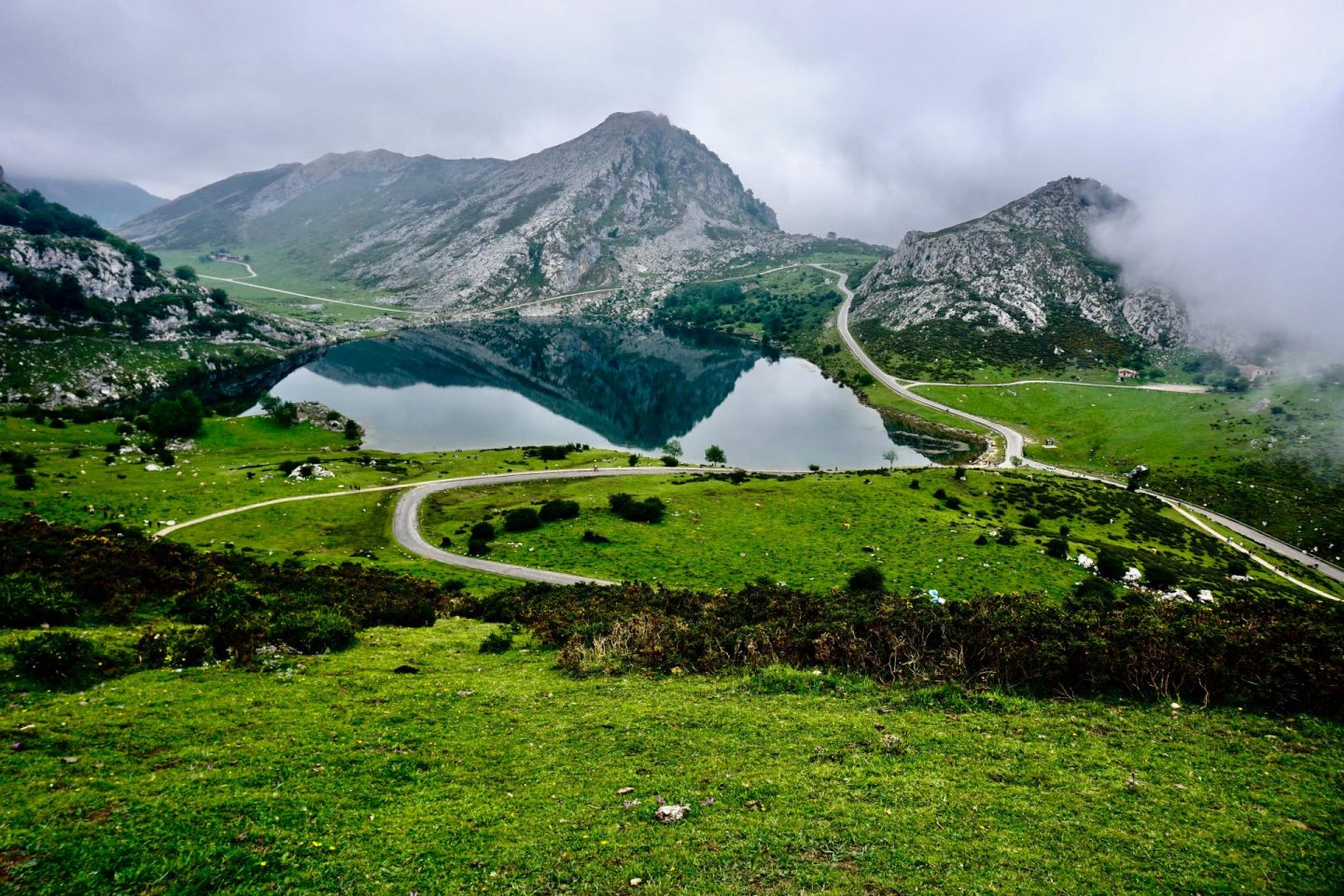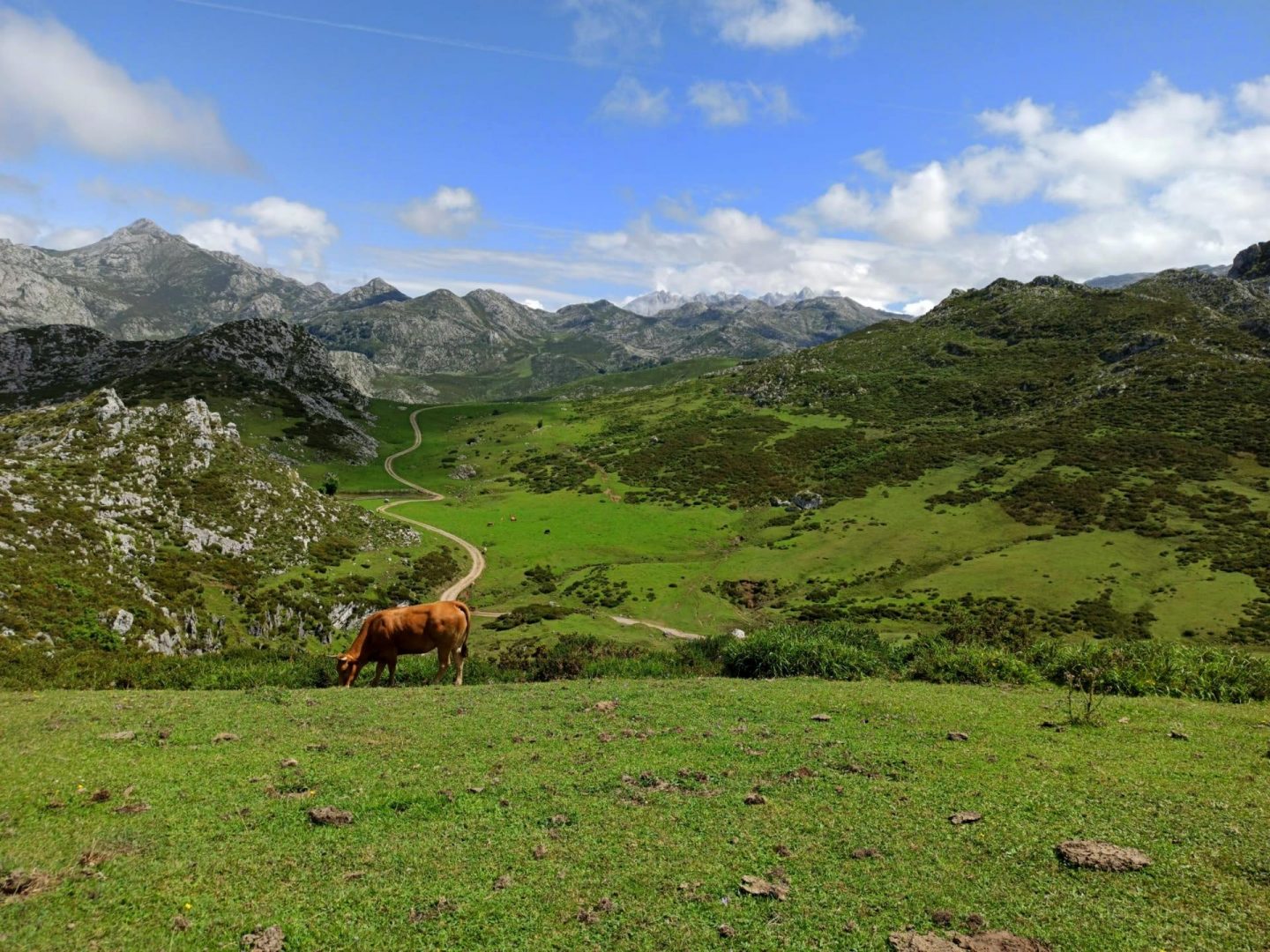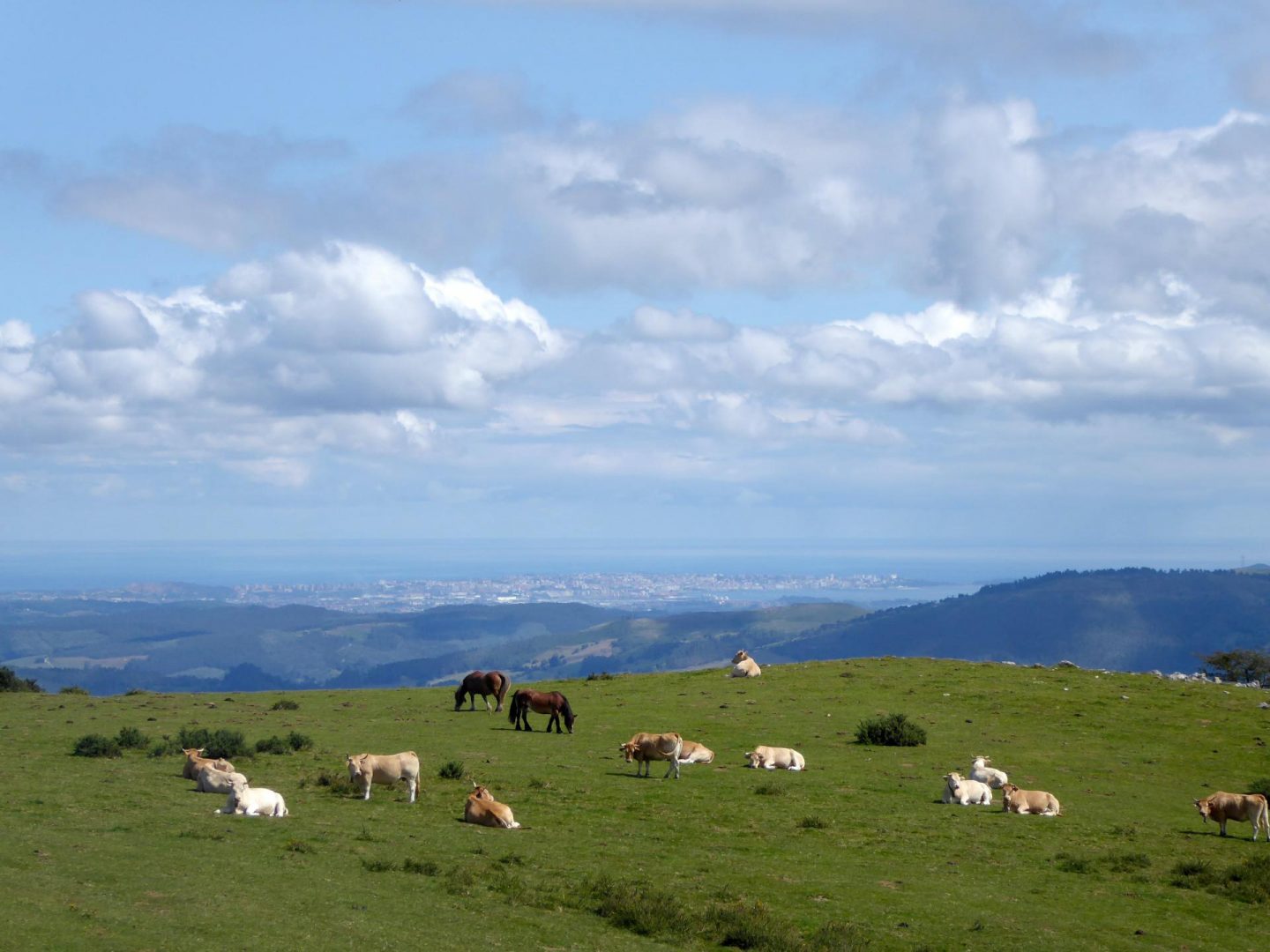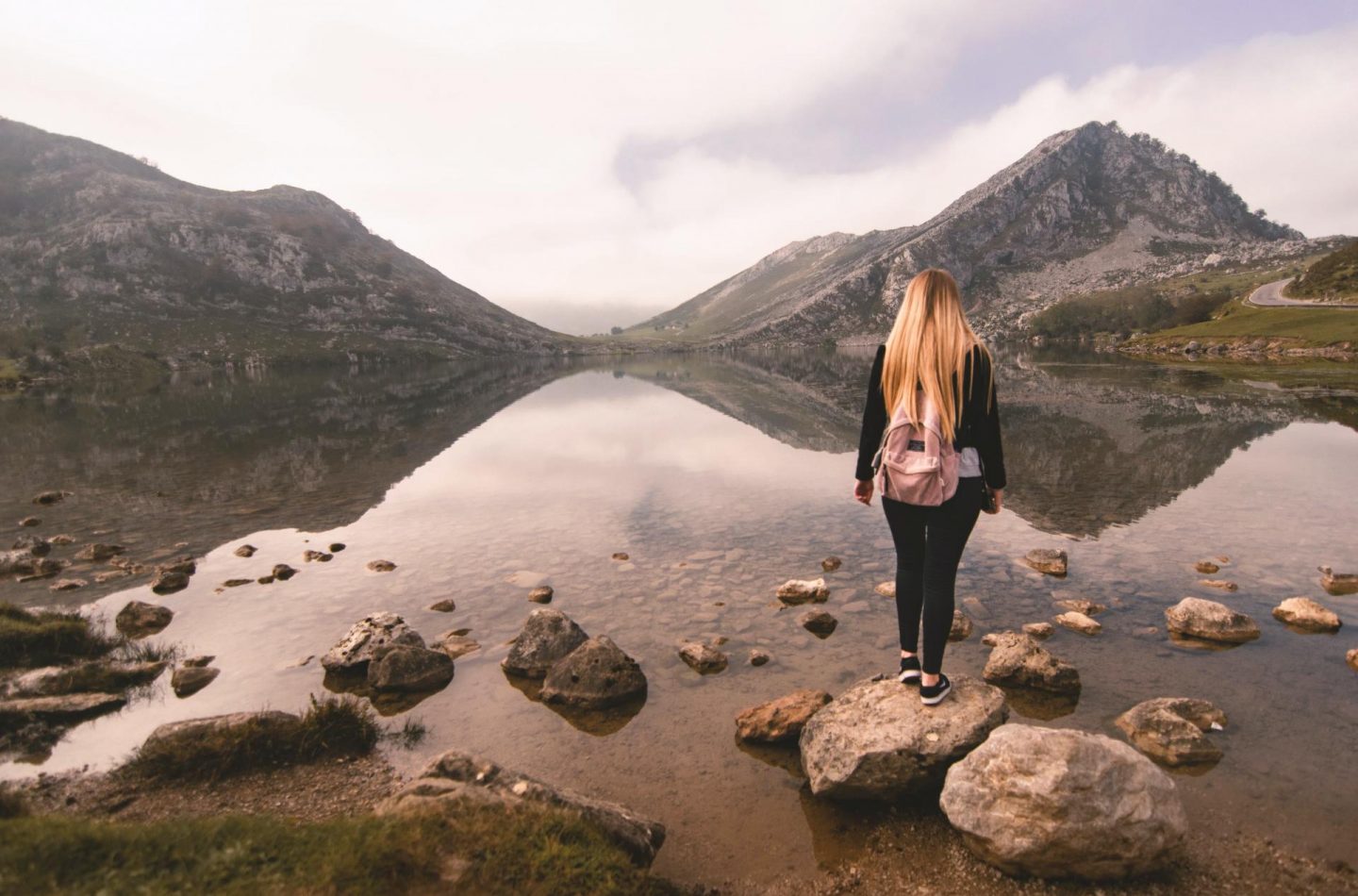
Welcome to hiking heaven. The Picos de Europa National Park is the jewel in Spain’s crown, a glorious sprawl of tall limestone mountains and summer pastures dotted with traditional, welcoming villages, all connected by a network of well-maintained walking trails.
The wild and beautiful Picos de Europa (its name translates as the Peaks of Europe) range of mountains is just 12 miles inland from the northern coast of Spain and stretches across three of the country’s provinces (Cantabria, León, and Asturias), covering 250 square miles of wild landscape. Hike the hills in the morning, surf or swim on the beautiful coast in the evening – does a day of adventure get better than that?
Ready to plan for the Picos? It’s worth remembering that Brits, Americans, and other visitors from outside the EU will need to fill in an ETIAS application online to go to Spain from 2024.
Mountain highs – six adventures in Spain’s Picos de Europa

Imagine waking up to green peaks that rise above 2,600 metres, their rocky faces cutting through the cloud, with villages steeped in tradition to stay in and remote mountain refuges to refuel at along the way. The Picos de Europa National Park is a roofed by iconic limestone mountains – dominating the skyline is Naranjo de Bulnes, boasting one of the park’s tallest summits at 2,519 metres and revered by local climbers. But whether you’re a seasoned hiker or new to the rambling game, there’s a mountain trail to suit every level here.
Explore the Cares Gorge
The Cares Gorge is the perfect first stop in the National Park. Also known as the “Divine Gorge”, this 7-mile trail is one of the most famous hikes in Spain. The upper reaches of this day-long route will take your breath away (look out for waterfalls and wild goats), and the trail connects two beautiful mountain villages, Caín de Valdeón in Leòn) and Poncebos in Asturias.
Tackle the Anillo de Picos
Up for a bigger challenge? Plan a multi-day trek along the Anillo de Picos, three linked, circular routes that ring the mountains of the National Park and stop at nine remote refuges, with 93 miles of high-altitude trail to cover in total. A wonderful way to really get under the skin of the Picos.

Spot local flora and fauna
The Picos de Europa’s biodiversity is astonishing. Eagles, buzzards, choughs, and vultures wing their way through the skies, while the rocky peaks and green slopes provide the perfect habitat for foxes, deer, and Cantabrian chamois — a type of mountain antelope unique to the region. There are even bears and wolves hiding away in the remote parts of the mountain range. Trails are also lined with a colourful tapestry of flora – keep an eye out for the beautiful and rare purple foxglove.

Just add water
Seek out the enchanting Lakes of Covadonga. Two glacial lakes — Lake Enol and Lake Ercina — offer the perfect spot to rest weary legs, and you might even be lucky enough to spot semi-wild horses grazing here. While visiting Covadonga, stop by the Santa Cueva de Nuestra Señora de Covadonga (Holy Cave of Our Lady of Covadonga), where a beautiful church perches above a waterfall feeding a pool of emerald-green water. If you’re in the northern part of the mountains, you aren’t far from the coast, either – Asturias is one of the best spots in Spain for water sports.
Stroll around Sotres
Welcome to Sotres, where stone cottages cluster under the eastern massif of the Picos to make up the highest village in Asturias, at 1,050 metres. Like so much of the National Park, Sotres feels totally untouched. This region is the only corner of the country that was unconquered by Moorish invaders, and is where the modern nation of Spain is said to have originated after the battle of Covadonga in 722. Now it’s home to cheese-makers and welcoming restaurants, is surrounded by traditional pastures and is the jumping-off point for gorgeous trekking routes.

A Taste of Tradition
The Picos de Europa is unique in Spain in that it is the only nature reserve in the country where people actually live. There are 11 vibrant villages spread throughout the mountains where you can stop and get a taste of the local fare of Asturias, Cantabria, and León, famed for their hearty dishes and artisanal cheeses. Make sure to try the Cabrales, a blue cheese matured in the natural caves, fabada asturiana (a rich bean stew) and local sidra, apple cider that’s poured from a height to aerate it.